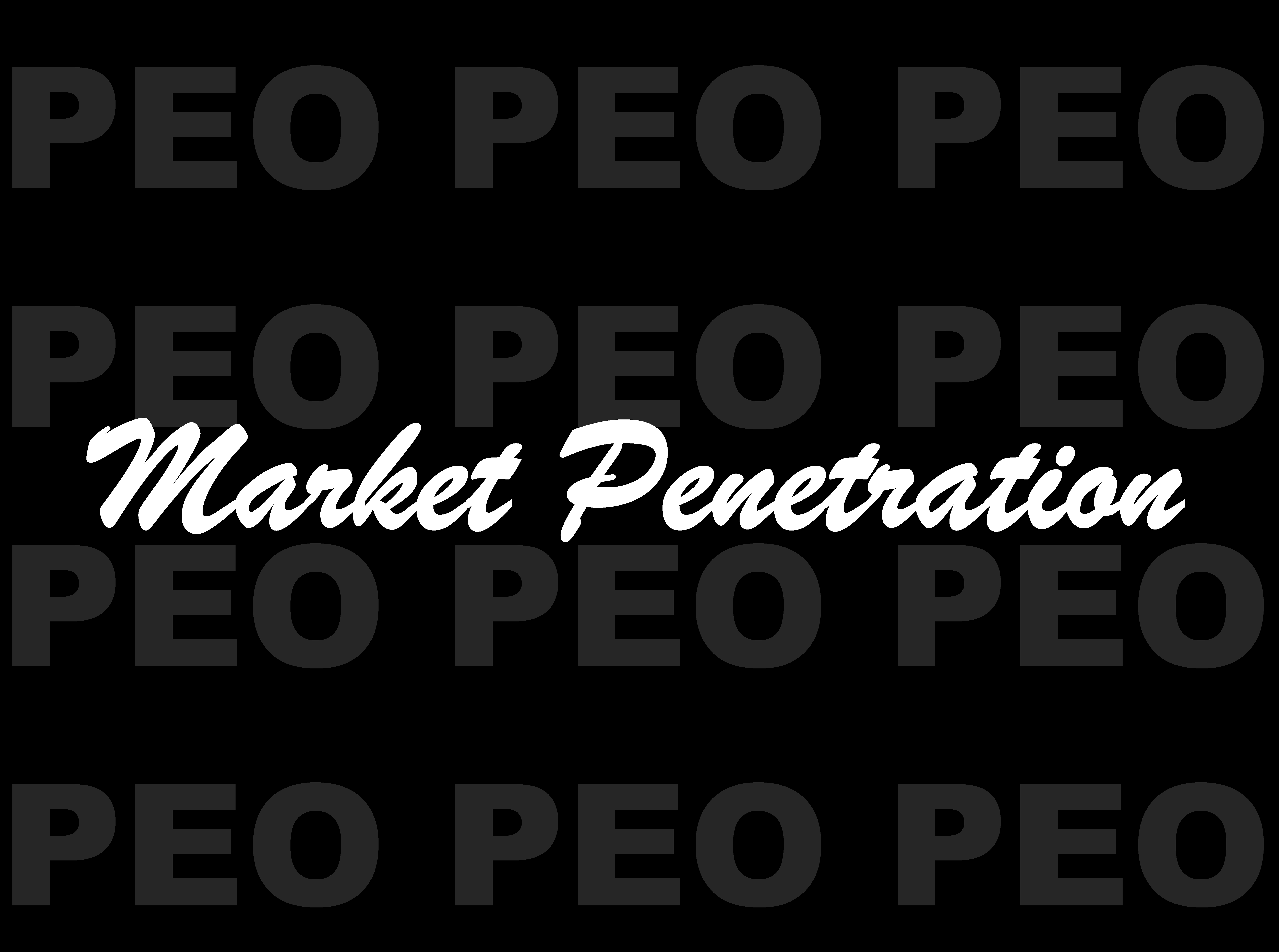PEO Market Penetration Estimates
According to NAPEO’s industry statistics study, the PEO market penetration for businesses between 10 and 99 employees is 15.3%. PEO has been around in its early forms since the late 80s early 90s, and in its current form, gained strong ground in the 2000s. I often receive a question from investors asking why the market penetration rate isn’t higher. Investors like the “white space” the industry has, but wonder why the PEO market penetration rate isn’t higher.
Rationale for Current Market Penetration Rates
There are many reasons why the penetration rate for PEOs is lower than some might think. Before we cover these areas, please note that the industry is not small. NAPEO’s market study states that PEOs provide services to 173K small- and medium-sized businesses employing over 4mm people. IBISWorld estimates that the industry has over $220bn in gross revenues. Plus, the PEO industry is growing, posting a CAGR between 2008 and 2020 of 7.6%. That being said, let’s explore why the market penetration rate isn’t higher than some may think.
Lack of Model Awareness
Historically, the PEO model has utilized a grassroots direct marketing approach. Whether a PEO markets directly to prospects, through a channel strategy of brokers, or both, the industry has largely utilized a push model for marketing. Meaning, the PEO will seek to penetrate the market through outbound sales activity in lieu of marketing and advertising. The GTM strategy costs less to go direct and historically has paid off, as the industry is growing, but this model lacks in creating brand awareness to SMBs. As a result, unless the PEO model is introduced to businesses via a PEO sales rep or insurance broker, they may not be aware the model exists.
Demand Drivers
The PEO model, to an extent, depends on complexities and rising costs of doing business at an SMB level. If an SMB has no pressure for regulatory compliance, insurance cost efficiencies, human resources strategies, workforce management technology, demand for talent, risk mitigation, etc., the model loses some of its pull. Each market (State) carries with it varying degrees of complexity for SMBs. As complexities grow, and it becomes harder for SMBs to operate their businesses, PEOs will continue to gain market share. As costs and compliance continue to plague employers, it is likely that the demand for the model will continue to increase.
Fragmented Industry | Consolidated Revenue
The industry itself is fragmented with players. NAPEO estimates that there are 487 PEOs in operation in the US. However, industry revenues are consolidated. The five publicly traded PEOs encapsulate over 50% of total gross revenues for the industry. If we round that out to the top 25 PEOs, it is probable that close 70% of revenues are derived from approximately 5% of the players. Many of the smaller PEOs have historically operated as lifestyle businesses. Ranging from between 1,000 and 3,000 WSEs with a relatively flat growth curve. This means that industry growth to a large extent, is driven by a smaller group of PEOs, not by the full 487 PEOs in existence today.
Rationale for Increased Market Penetration
Now that we’ve reviewed a few reasons that have historically stood in the way of PEO market penetration, let’s look at some reasons why the PEO industry is poised for future growth.
Regulatory Compliance
The mandates to remain within various levels of governing regulatory compliance for SMBs are many. SMBs already have to worry about competing against larger organizations, sales, operations, talent, capital, goods procurement, economic cyclicality, etc. Layering on regulatory compliance is another aspect of business that detracts from running a business. As long as regulatory compliance requirements continue to increase and evolve, SMBs will require guidance and assistance to remain within compliance.
Rising Cost of Doing Business
Medical inflation is real and will continue to increase. For businesses, the cost of capital has increased. The cost of labor has increased. The cost of goods has increased. Businesses will look to reduce cost where they can. PEOs possess strong scale and ability to reduce costs on labor, insurance, and operations through its master insurance policies, consultative guidance, and workforce management technology. As the cost to do business and retain talent increases, PEO client bases will widen, creating a growth curve that can weather economic cyclicality. Moreover, due to the high retention rates at PEOs, when the economy rebounds, PEO revenues will sore due to a wider client base.
Human Capital Complexities
The demand for labor and cumbersome employment guidelines are harder than ever for SMBs. PEOs play a vital role in streamlining hiring practices, giving SMBS excellent benefits and ancillary options to attract/retain talent, and provide best practices, HR guidance, and employment infrastructure to mitigate risk. Moreover, PEOs have a product suite that SMBs can offer to talent to help attract, retain, and grow their talent base. PEOs can function as the backbone of employment related matters through proper infrastructure, guidance and consultation, and risk mitigation strategies to improve the employment lifecycle of WSEs at PEO SMBs.
Bottom-line, it is not getting easier to run a small- or medium-sized business in the United States, its getting harder. PEOs support SMBs and provide them with a better opportunity to realize the American dream.
Author
Rob Comeau is the Founder and CEO of Business Resource Center, Inc., a consulting and M&A advisory firm with a niche focus on the PEO industry. Comeau is the Founder and featured Author of this PEO publication, a minority Partner in PEOs, and hold various board seats for business services and technology companies. You may visit Business Resource Center, Inc. at www.-biz-rc.com, and you may contact Rob at rob.comeau@biz-rc.com.
